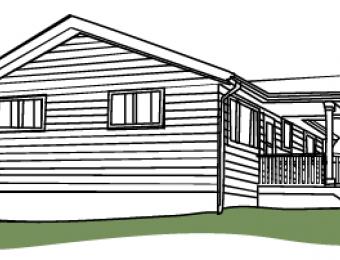Subfloors are essentially the important structural layers upon which the decorative flooring rests. They serve to support the floor finishes and in some cases, they include the layers that separate the main structural parts of the floor from decorative floor coverings.
It is important to choose the right type of subfloor for your surroundings, climate and purpose, as it will have a big effect on the finished result. Choosing the wrong subfloor for your needs or having one installed incorrectly can have disastrous consequences further down the road.
Stump subfloor
Particularly appropriate for reactive soil or sloped ground, stump sub floors involve raising the house off the ground on stumps sunken into the earth.
Ground level concrete slab subfloor
Solid concrete slab floors are extremely durable, require very little maintenance and offer excellent insulation.
Suspended slab subfloor
Suspended slab can be used either for the upper-floors in a multi-storey building, or as a solid base on hilly or uneven terrain.
Beam and joist subfloor
These sub-floors are strong but lightweight, and are employed in houses with stumps, and as upper-floors in multi-storey building.
Screw piers (or screw piles)
Screw piers offer a quick, strong and very effective way to install stumps for a house, and can be installed almost anywhere.
Concrete sheeting
Concrete sheeting can be used instead of particleboard as a base for another overlay, such as tiles, carpet or slate.
Particleboard flooring
Particleboard sheet flooring is used to cover large expanses of floor quickly and cheaply, providing a base for other flooring finishes.
Steel frame subfloors
Steel can be used as an alternative to wood to create a sturdy beam and joist subfloor frame.
Universal beams (I or H beams)
Universal beams are 'I' or 'H' shaped metal beams designed to provide added strength to a subfloor.










